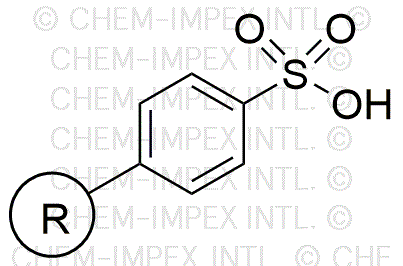Sulfonic acid resin is widely utilized in research focused on:
- Ion Exchange Processes: This resin is commonly used in water treatment facilities to remove unwanted ions, making it essential for industries that require high-purity water, such as pharmaceuticals and electronics.
- Catalysis: In organic synthesis, sulfonic acid resins serve as solid acid catalysts, offering advantages over liquid acids by simplifying product separation and reducing corrosion risks.
- Separation Techniques: Employed in chromatography, these resins help in the efficient separation of complex mixtures, crucial for chemical analysis and quality control in various industries.
- Polymer Chemistry: Used in the development of advanced materials, sulfonic acid resins contribute to the production of ion-conductive polymers, which are vital for fuel cells and batteries.
- Environmental Applications: These resins are effective in capturing heavy metals from wastewater, supporting environmental remediation efforts and compliance with regulatory standards.
General Information
Properties
Safety and Regulations
Applications
Sulfonic acid resin is widely utilized in research focused on:
- Ion Exchange Processes: This resin is commonly used in water treatment facilities to remove unwanted ions, making it essential for industries that require high-purity water, such as pharmaceuticals and electronics.
- Catalysis: In organic synthesis, sulfonic acid resins serve as solid acid catalysts, offering advantages over liquid acids by simplifying product separation and reducing corrosion risks.
- Separation Techniques: Employed in chromatography, these resins help in the efficient separation of complex mixtures, crucial for chemical analysis and quality control in various industries.
- Polymer Chemistry: Used in the development of advanced materials, sulfonic acid resins contribute to the production of ion-conductive polymers, which are vital for fuel cells and batteries.
- Environmental Applications: These resins are effective in capturing heavy metals from wastewater, supporting environmental remediation efforts and compliance with regulatory standards.
Documents
Safety Data Sheets (SDS)
The SDS provides comprehensive safety information on handling, storage, and disposal of the product.
Product Specification (PS)
The PS provides a comprehensive breakdown of the product’s properties, including chemical composition, physical state, purity, and storage requirements. It also details acceptable quality ranges and the product's intended applications.
Certificates of Analysis (COA)
Search for Certificates of Analysis (COA) by entering the products Lot Number. Lot and Batch Numbers can be found on a product’s label following the words ‘Lot’ or ‘Batch’.
*Catalog Number
*Lot Number
Certificates Of Origin (COO)
This COO confirms the country where the product was manufactured, and also details the materials and components used in it and whether it is derived from natural, synthetic, or other specific sources. This certificate may be required for customs, trade, and regulatory compliance.
*Catalog Number
*Lot Number
Safety Data Sheets (SDS)
The SDS provides comprehensive safety information on handling, storage, and disposal of the product.
DownloadProduct Specification (PS)
The PS provides a comprehensive breakdown of the product’s properties, including chemical composition, physical state, purity, and storage requirements. It also details acceptable quality ranges and the product's intended applications.
DownloadCertificates of Analysis (COA)
Search for Certificates of Analysis (COA) by entering the products Lot Number. Lot and Batch Numbers can be found on a product’s label following the words ‘Lot’ or ‘Batch’.
*Catalog Number
*Lot Number
Certificates Of Origin (COO)
This COO confirms the country where the product was manufactured, and also details the materials and components used in it and whether it is derived from natural, synthetic, or other specific sources. This certificate may be required for customs, trade, and regulatory compliance.


